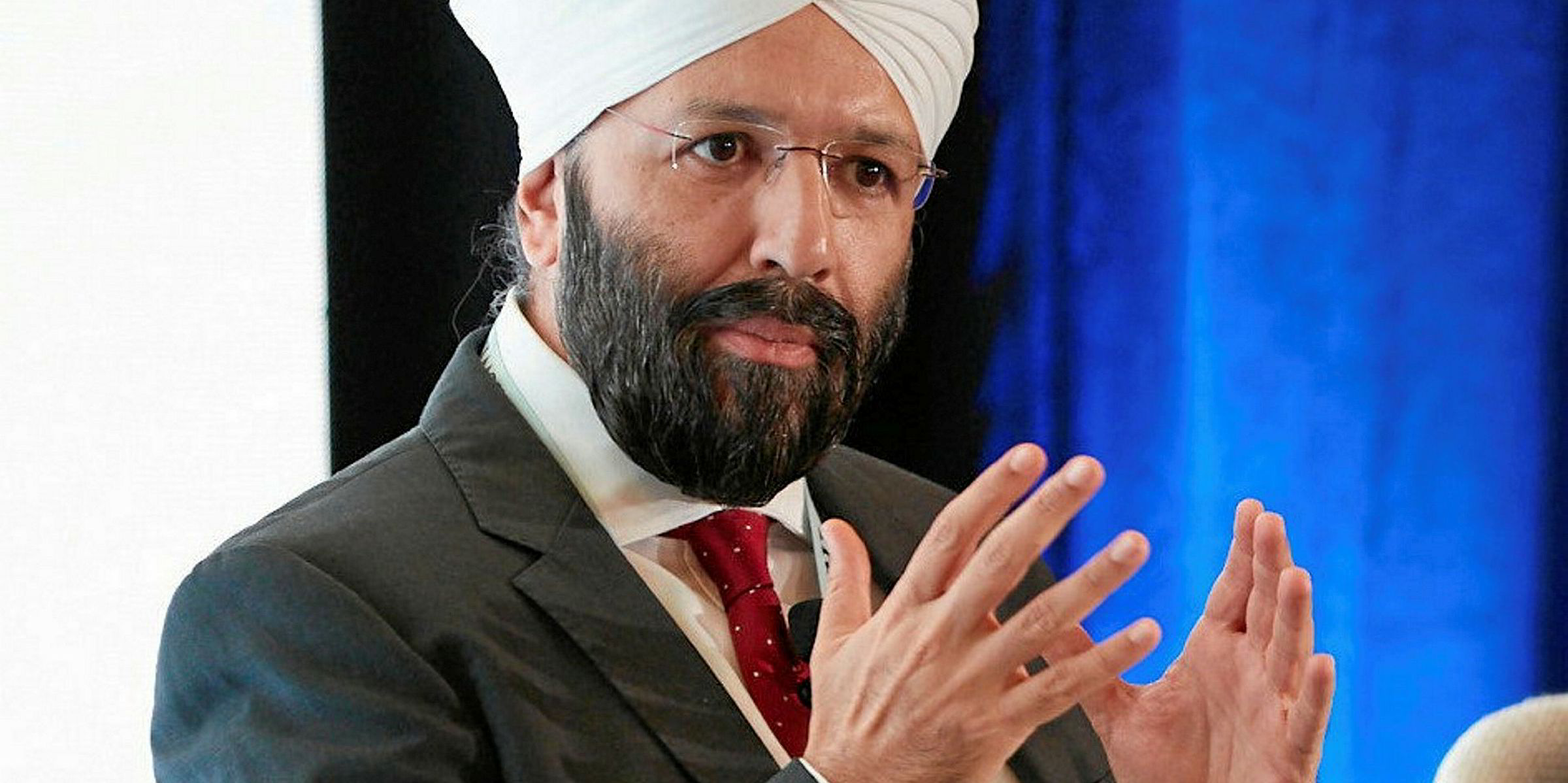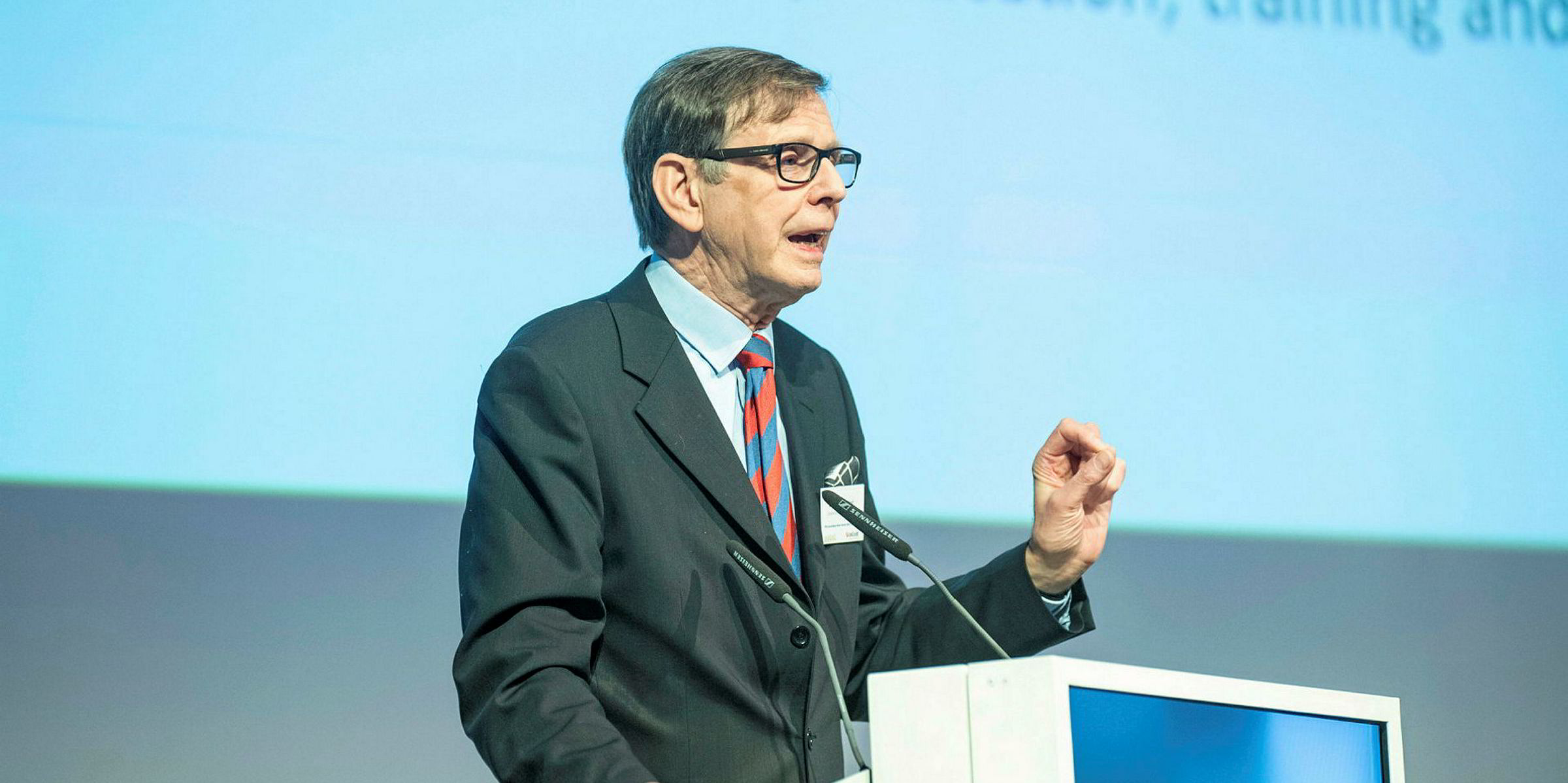With the coming decade’s marine bunker market set to be dominated by oil-based fuels, DNV GL has called on shipowners to install dual-fuel engines to kick-start their decarbonisation drive.
The International Maritime Organization has set targets to reduce carbon emissions from global shipping by 2050, while some regional authorities — such as the European Union — are also aiming for emission cuts in maritime transport.
“Gas is really an important first step on the pathway to decarbonisation, and an even better fuel for the future,” DNV GL’s maritime chief executive Knut Orbeck-Nilssen told TradeWinds.
His remarks came after the classification published its Maritime Forecast to 2050 report, which predicts that dual-fuel engines powered by LNG and oil-based fuels can enjoy multiple advantages.
Such engines would be able to run on cheap LNG, reduce CO2 emissions by 20% to 25%, and retain the flexibility to switch to new types of low-carbon fuels when they are available, according to the report.
“Installing a dual-fuel LNG engine is a robust choice for today, enabling future flexibility. Seizing the opportunities of decarbonisation is critical to optimise ships’ earning potential,” Orbeck-Nilssen said.
Data from DNV GL shows 9.74% of the existing orderbook is powered by alternative fuels like LNG — compared with 0.39% of the world’s fleet in operation.
Orbeck-Nilssen said this shows more vessels will be powered by non-oil fuels in the future.
“When you look at the orderbook, it has been a very interesting development,” he said. “The deepsea vessels are more looking into gas as fuel.
“It’s quite a strong indication that we will see a growing trend.”
Pandemic hits shipping demand
DNV GL’s forecast is based on the continued expansion of seaborne transport in the long run despite the setback this year due to the coronavirus pandemic.
Total seaborne trade volume is expected to fall by 8% this year before a gradual recovery in the 2020s, its estimates show.
“What we have seen is that it will have an impact, at least in the short term. But when we look to 2050… it doesn't have that big of an impact,” DNV GL’s maritime principle consultant Tore Longva said.
The forecast report has developed 30 scenarios of future bunker mix according to regulatory ambitions, fuel prices and seaborne trade demand.
Those scenarios can be categorised into three groups: the "No Ambition" pathway assuming no further decarbonisation regulations for shipping from now on; the IMO pathway following the global regulator’s targets; the "Decarbonisation by 2040" pathway based on a more aggressive environmental drive than currently.
Oil dominance
In all of the scenarios, heavy fuel oil, marine gasoil (MGO) and very low sulphur fuel oil will continue to dominate the global bunker market over the next decade.
The study suggests shipowners would need to start to adopt energy-efficiency measures and LNG as a marine fuel soon as low-carbon or zero-carbon fuels will not be ready by 2030.
“We are at a stage now where shipping must prepare for and start on a decarbonisation pathway, and this decade is going to be instrumental in getting that kicked off,” Orbeck-Nilssen said.
Under the decarbonisation scenarios, fossil LNG will expand its share in the bunker mix significantly until regulations tighten in 2030 or 2040. Then, bio-based and electro-based MGO and LNG will emerge as drop-in fuels for existing ships.
By 2050, ammonia and methanol produced via renewable means will account for a large share in the marine fuel mix.
In one of the scenarios in the IMO pathway cited by Energy Transition Outlook 2020 — another DNV GL report — low-carbon fuels will make up 60% of the bunker market in 2050 and natural gas — mostly LNG — will take 30%. Total bunker demand will have peaked in 2034.
“Of the different fuel types on the horizon, it seems like ammonia and methanol are very promising fuels,” Orbeck-Nilssen said.
DNV GL sees limited uptake of LPG and hydrogen across all scenarios, aside from niche applications such as LPG carriers and hydrogen-fuelled ferries and cruiseships.
But the study expects hydrogen to play “an integral role” in the production of ammonia and methanol.
“At least for deepsea shipping, [hydrogen] is troublesome because it takes a lot of space,” said Longva, adding that there could be however “some very new and innovative” ways of producing low-carbon fuels from hydrogen in the future.








